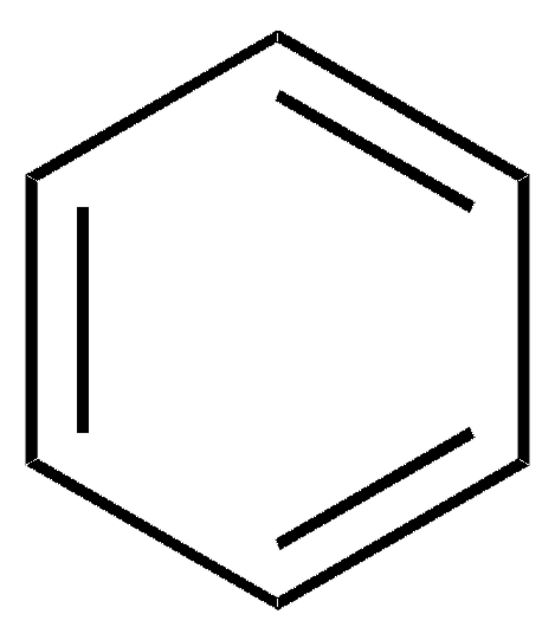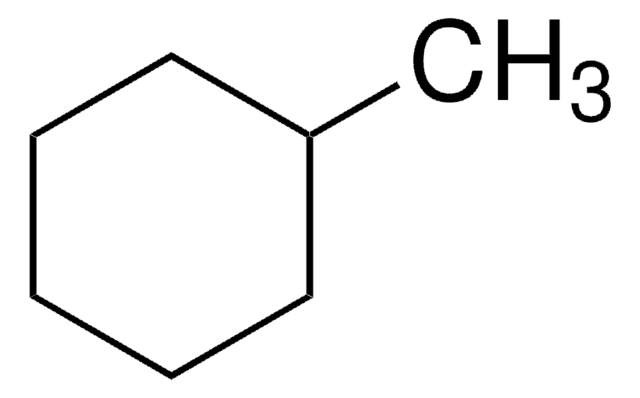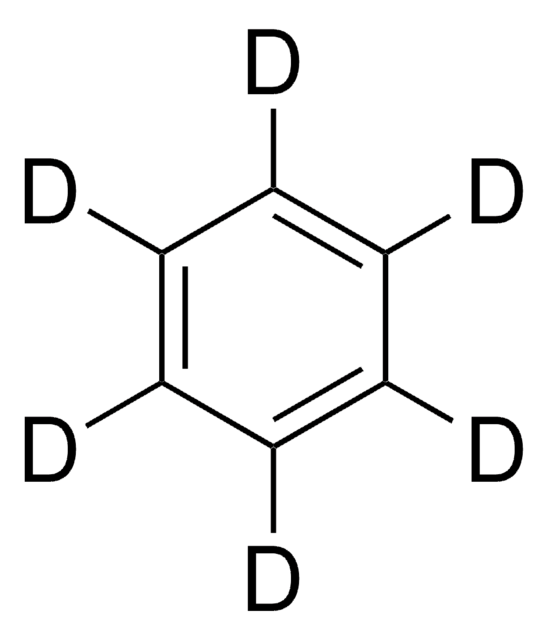About This Item
74.6 mmHg ( 20 °C)
Recommended Products
grade
ACS reagent
Quality Level
vapor density
2.77 (vs air)
vapor pressure
166 mmHg ( 37.7 °C)
74.6 mmHg ( 20 °C)
Assay
≥99.0%
form
liquid
autoignition temp.
1043 °F
expl. lim.
8 %
dilution
(for analytical testing)
impurities
H2SO4, passes test (darkened)
thiophene, passes test (limit ∼1ppm)
≤0.005% S compounds
≤0.05% water (Karl Fischer)
evapn. residue
≤0.001%
color
APHA: ≤10
refractive index
n20/D 1.501 (lit.)
bp
80 °C (lit.)
mp
5.5 °C (lit.)
density
0.874 g/mL at 25 °C (lit.)
SMILES string
c1ccccc1
InChI
1S/C6H6/c1-2-4-6-5-3-1/h1-6H
InChI key
UHOVQNZJYSORNB-UHFFFAOYSA-N
Looking for similar products? Visit Product Comparison Guide
Related Categories
General description
Application
- Heck Reaction of vinyl bromides with styrenes to synthesize functionalized 1,3-dienes.
- Gallium-catalyzed reductive lactonization of γ-keto acids to γ-lactone derivatives.
- Anionic polymerization of styrene and 1,3-butadiene in the presence of phosphazene as a base.
Signal Word
Danger
Hazard Statements
Precautionary Statements
Hazard Classifications
Aquatic Chronic 3 - Asp. Tox. 1 - Carc. 1A - Eye Irrit. 2 - Flam. Liq. 2 - Muta. 1B - Skin Irrit. 2 - STOT RE 1
Target Organs
Blood
Storage Class Code
3 - Flammable liquids
WGK
WGK 3
Flash Point(F)
12.2 °F
Flash Point(C)
-11 °C
Regulatory Listings
Regulatory Listings are mainly provided for chemical products. Only limited information can be provided here for non-chemical products. No entry means none of the components are listed. It is the user’s obligation to ensure the safe and legal use of the product.
EU REACH Annex XVII (Restriction List)
Choose from one of the most recent versions:
Already Own This Product?
Find documentation for the products that you have recently purchased in the Document Library.
Our team of scientists has experience in all areas of research including Life Science, Material Science, Chemical Synthesis, Chromatography, Analytical and many others.
Contact Technical Service






